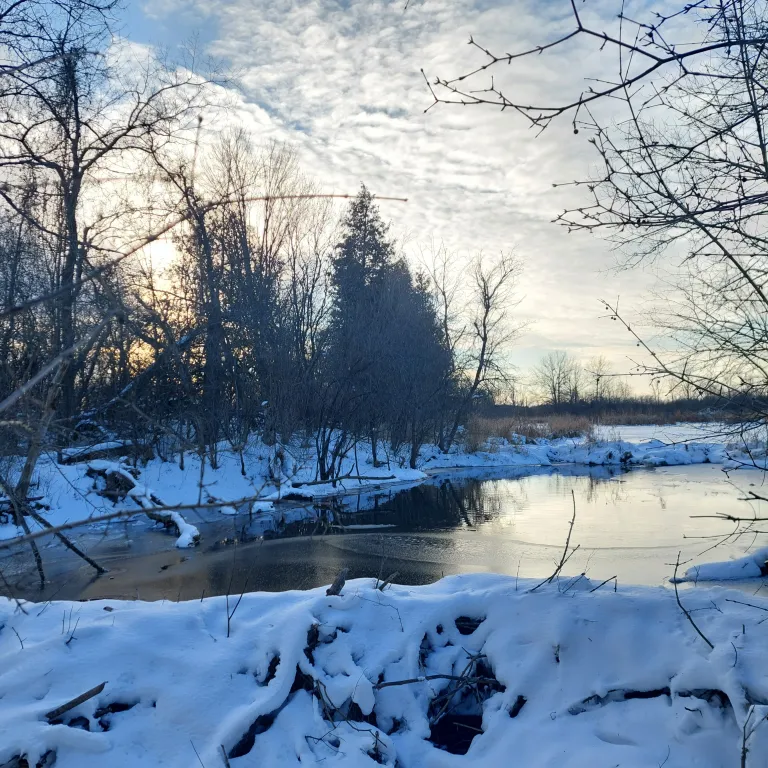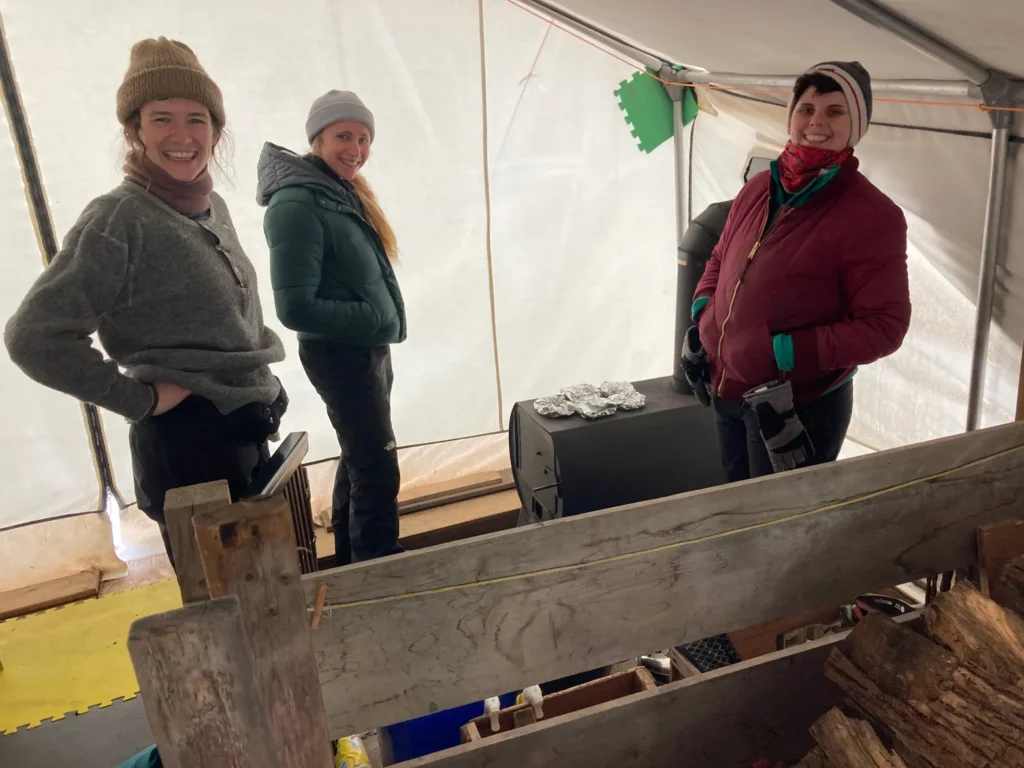Did you know that our staff team gathers together three times during the school year for seasonal Forest and Nature School training? It’s true! Training offers our educators time to focus on both relationship-building and an understanding of the philosophies and principles that inform Out to Play’s pedagogy. These training days fill our buckets up with energy, information and inspiration that we’re ready to share with your children.
We’re sharing this glimpse into our training with you, our broader community, to demonstrate a central piece that contributes to the safe, creative and child-centred programs at Out to Play. This article features photos from an afternoon of training where we cooked for one another over the various fires on site, while honing our storytelling abilities. It shares the journey our discussions took as we considered the joys of winter, and the challenges.
We were grateful to have Sonja Lukassen lead the 2025 Winter Training session. Sonja is a Forest and Nature School Practitioner and Trainer, who has worked alongside many of us for several years. For this year’s winter training, we gathered at the Out to Play site for two very, very cold days to build upon our relationships with each other, with the land, and with our work. We talked a lot about the cold, including the ways that educators need to care for themselves, so that they can be fully and completely present to care for the children.
We talked about the way care in winter is unique, from drop-off to pick-up, and during every moment through the day. We even discussed the added pieces involved in bathrooming in a blizzard, and all the ways an educator will help a child feel both empowered and supported in that time!
We talked about how caring for the site shifts in the winter. It is the season when we are most grateful for and dependent upon our tents, and yet it is also the season in which we need to take extra care of the canvas as it holds the weight of snow and the strain of wind.
By talking through these pieces together in training, your child’s educator team is ready to dynamically respond to the needs that emerge from the group throughout the day.
In an ideal world, we are able to be completely present and ready for challenges as the children’s day unfolds, because we have anticipated our own needs and those of the site, and have attended to them in advance.
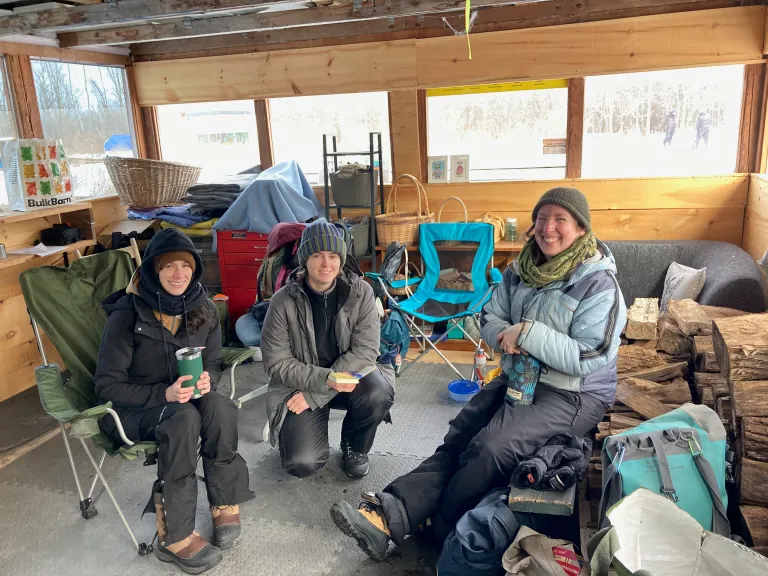
Risk Assessment in Winter
Out to Play has written documents that describe the hazards on the site, and the risks in different kinds of play, along with the mitigations that each staff agrees to. This training focused specifically on avoiding cold-related injuries and head injuries.
We also discussed joyful winter-specific activities that we love to say yes to! We considered the joys and dangers of throwing snow and snowball fights, building snow shelters, sliding on ice and harvesting icicles. The team pieced apart specific ways that we support our students in staying physically and emotionally safe while immersing themselves in all these different kinds of play.
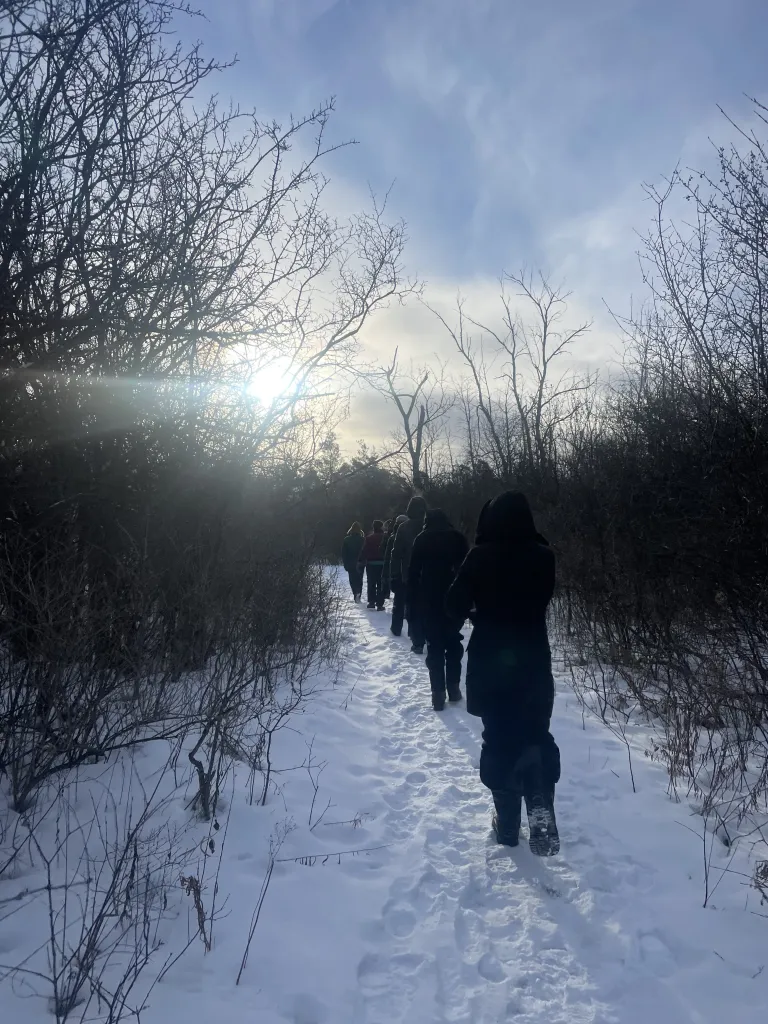
Assessing and Responding to Risk as a Team
We can’t talk about risk without also considering communication between educators! Working in teams offers each educator a sounding board and second opinion on risky play decisions. A co-educator is someone to play ideas off of, and someone to offer to tap in when an educator needs to tap out. Working in teams makes it possible for one educator to focus on higher risk activities like whittling or exploring the frozen creek, while the other manages the big picture of the group.
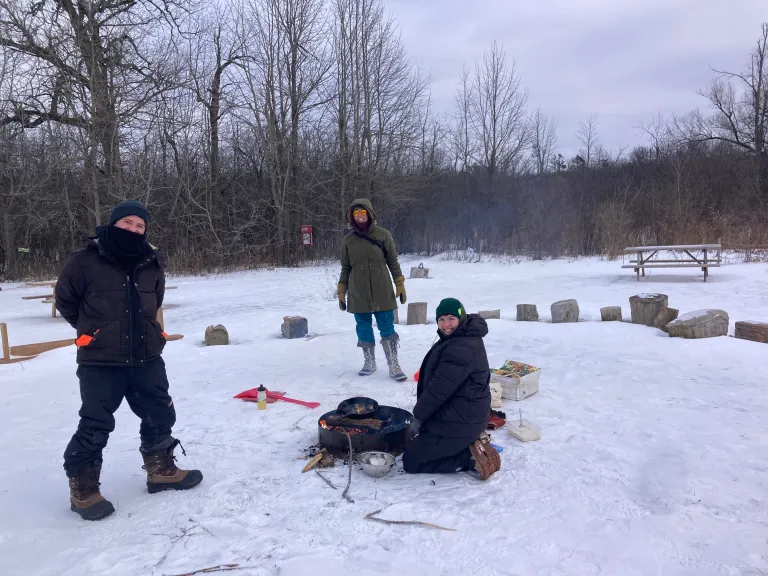
Sometimes, a scenario emerges where the two educators feel differently about a risky activity. This is inevitable when you’re working in a dynamic play situation where new potential risks might emerge. We discussed what to do when two educators disagree on how to manage a risky situation, and those tensions emerge. For example: If my co-educator is comfortable letting students walk on the frozen creek, and I have a weird feeling in my stomach about it… then what happens?
What we encourage at Out to Play is constant communication between all members of our team. We also encourage and model emotional vulnerability as part of that open communication. There is no sense of bravado that underlies our program’s promotion of risky play, and as such, there is no pressure for an educator to support something that is making them uncomfortable.
Even if I can’t necessarily articulate what’s making me feel uncomfortable about an activity, I am encouraged to speak up and tell my co-educator, “Hey, I don’t feel great about this.” When we encounter this, we’ve agreed as a team to defer to the more conservative perspective in the moment, and return to the conversation later.

With our eyes on busy groups of children we seldom have time for an extended conversation or analysis of risk, so the educator team understands that it’s important to debrief at the end of every day. In the moment the play has paused and the parameters adjusted, i.e., “We’ll play on this section on the creek but we won’t continue further until we have checked it more thoroughly.” At the end of the day when the conversation continues, there is space for both individuals to share and discuss what was informing their decision-making. The debrief offers us an opportunity to decide what to do next time.
Reflection is valued in the Out to Play staff team. We need to know how we feel about different kinds of risky play and why we feel that way. And we need to be able to communicate that.
Take a glance at an Out to Play program in winter and you’ll see a handful of children building an ice museum, another group building with big tires and planks, children making ice potions over at the mud kitchens and another sitting at the tent changing their socks. It isn’t immediately obvious the multitude of decisions that have unfolded, or how the educators have navigated different kinds of risk to offer another beautiful day of building a friendship with winter for your children. That friendship with winter can last a lifetime. We’re working to offer a lifetime of outdoor, snowy play.
I’ve been doing this work for many years and still, every staff training session with the Out to Play team leaves me filled with gratitude, excitement and joy. The educators who work alongside your children are truly a magical and gifted assortment of individuals, and they have fused to make a team that is stronger, more passionate and more playful than the sum of its parts. We’re so glad you and your families have chosen to be a part of it!
